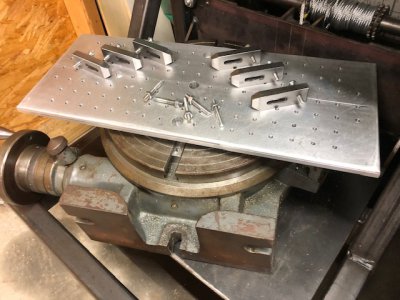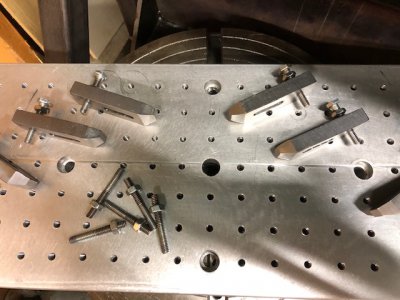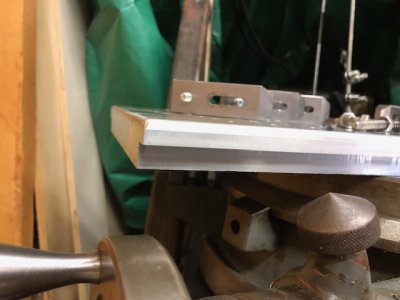I did a 7x24" plate for my G0704 with 3/8-16 tapped holes and .251 reamed holes on offset 1" grids (138 holes each!). If you can lift the plate and leave room underneath, a good sharp sprial point will do the best job. If not, use a spiral flute tap to pull the chips out of the top. My experience is that spiral flute taps don't extract chips in aluminum as well as they do in steel and they are weaker (hence the recommendation for spiral point). Make sure the tap is clean after each hole and is well lubricated.
I was fortunate enough to use a large knee mill with a tapping head to do mine, but you should be perfectly fine if you go slow.
I'd recommend to consider drilling and reaming some .251 holes on the plate. You can drop 1/4" dowel pins in to quickly align your vise or other setups. Just make sure your pallet is indicated true before you drill them! My vise comes in at less than 2 tenths across the 4" jaw without any indicating necessary just by dropping two dowels on the table.



